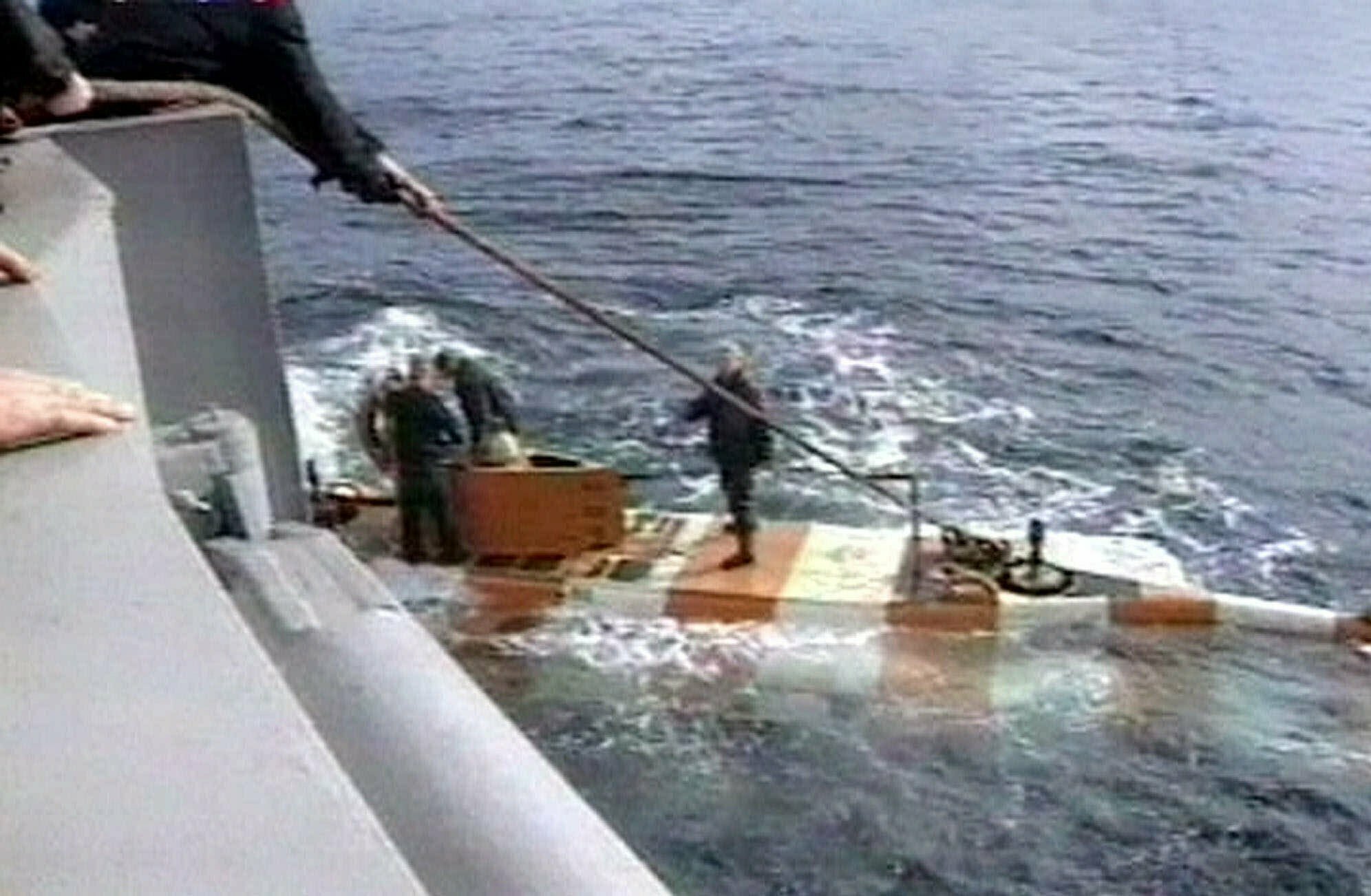Fire kills 14 on Russian navy submarine
Russia's navy said the submarine is back in port after the fire broke out Monday
MOSCOW -- Russia's navy says a fire aboard one of its deep-sea submersibles has killed 14 sailors.
The fire broke out Monday while the submersible was carrying out tests in Russian territorial waters, the navy said in a statement published by state media.
The navy said the fire was extinguished thanks to the "self-sacrifice of the crew" and that the vessel is now back in the Russian Arctic port of Severomorsk.
Russia released few details about the incident and did not say where it had happened or the type of submersible involved, but Russian media reports suggested it was aboard a top secret submarine designed for deep sea exploration.
President Vladimir Putin held a brief televised meeting with Russia's defense minster, Sergey Shoigu, in the Kremlin on Tuesday following the incident. Putin ordered Shoigu to travel to Severomorsk to oversee the investigation into the cause of the accident and to report back personally to him. He also noted that submarine was not a usual navy ship.
"It is not an ordinary vessel," Putin told Shoigu at the brief meeting that was aired on state television and appeared scripted. "Me and you know that this is a scientific-research vessel, the crew is highly professional. This is a big loss for the navy."
He noted that among the dead were seven captains of first rank and two personnel who had received the country's highest state honor.
He expressed his condolences to the victims' families and said that all necessary measures should be taken to assist them.
The Russian military said the fire had happened while the crew was conducting a "bathymetric measurement," a way of mapping the ocean floor. It said the sailors had been killed by toxic gases released by the fire.
The accident is one of the most deadly in the Russian navy in years and quickly summoned memories of the Russian navy submarine the Kursk, which sank in 2000, killing all 118 aboard. That disaster is seen as a key event of Putin's early years in power, when he was heavily criticized for overseeing what was seen as a slow response to the accident and refusing international aid to rescue the sailors.

The Russian military did not identify the vessel involved in Monday's fire. But two independent Russian newspapers quoted anonymous defense sources that it was a small, highly secretive nuclear-powered submarine, called the AS-12, that is designed for operating at exceptionally deep depths. Nicknamed the "Losharik" after a Russian children's character, the submarine, of which only one is reported to exist, is unarmed and has previously been reported by Russian state media as intended for carrying out exploration missions by the Russian ministry of defense.
The "Losharik" has been described as one of the most secretive vessels in the Russian navy, with few details about it confirmed publicly. Construction on the vessel began in 1988 and it was put out to sea in 2003, according to Russian state media reports. Russian media has previously claimed the submarine is capable of diving as deep as 20,000 feet and a report in the state newspaper Izvestia in 2012 said the "Losharik" had taken part in an Arctic expedition where it took samples from the seabed almost 2 miles down. What is believed to be one of the only known photos of the submarine was spotted by military enthusiasts in 2015 after it was apparently accidentally photographed by a team from the Russian car magazine Top Gear while they were carrying out a test drive of a Mercedes-Benz GL450 in northern Russia.
Naval experts have suggested that Russian deep-sea submarines like the "Losharik" might be used to tap or even sever intercontinental communications cables that cross the seabed and which carry most of the world's internet traffic. In the past two years, a number of Western military officials have issued warnings that Russian submarines have been picked up close to the cables.
There has so far been no confirmation that the "Losharik" was the vessel which suffered the fire.




